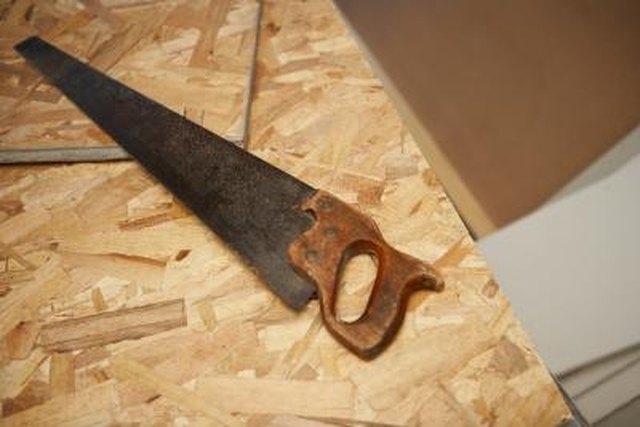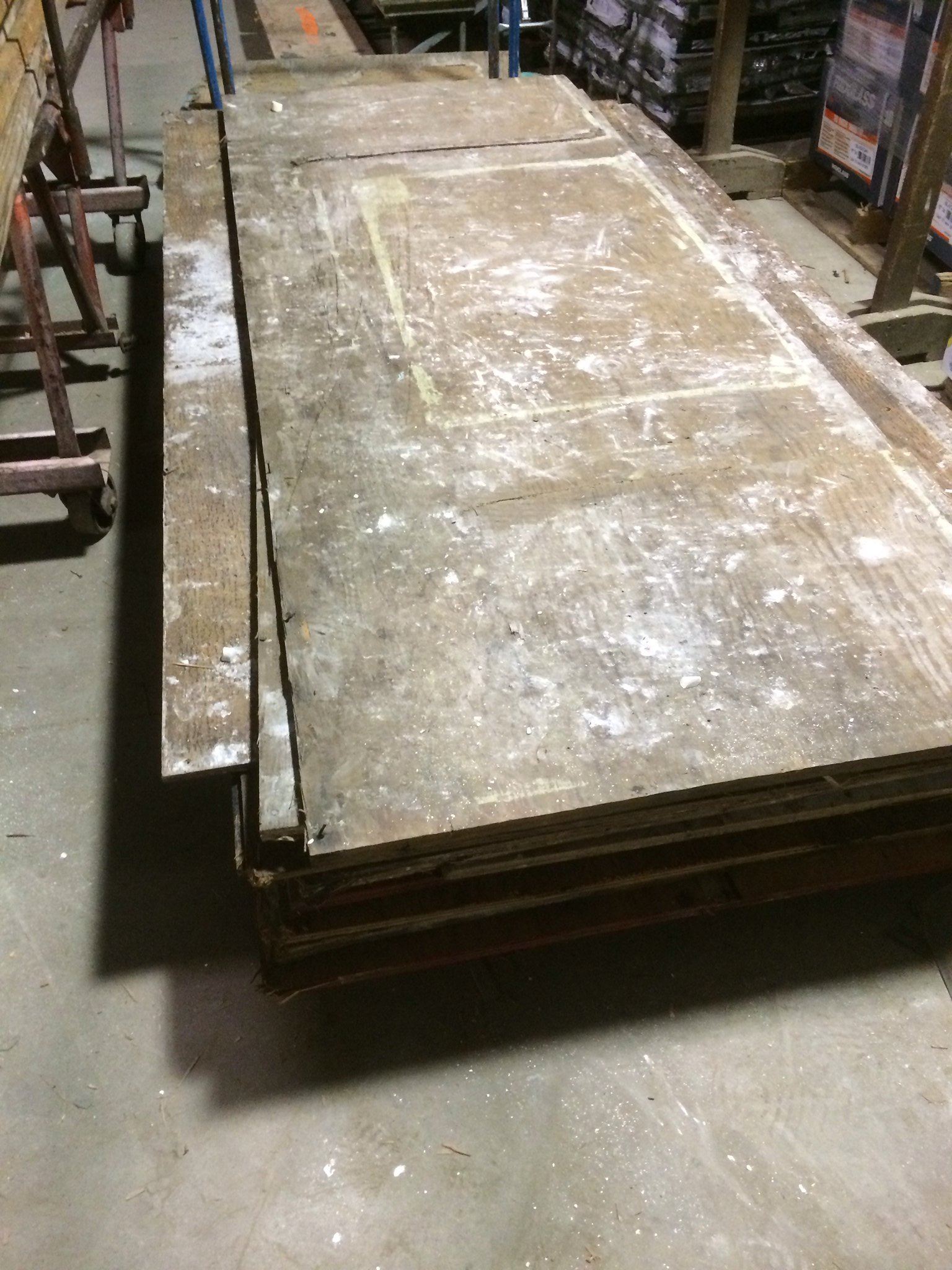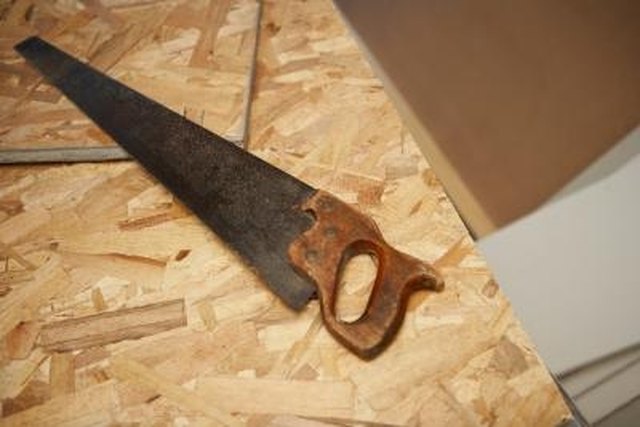Looking for answers as to why plywood smells? Don’t worry, you’re not alone in this curious inquiry! Plywood is a popular material known for its versatility and strength, but it’s also notorious for its distinctive scent. In this article, we’ll unravel the mysteries behind why plywood emits that unique odor and explore possible reasons for its smell. So, let’s dive right in and discover the science behind the aromatic allure of plywood!
Now, you might be wondering, “Why does plywood have a smell at all?” Well, my curious friend, one of the primary culprits behind the scent is something called “off-gassing.” When plywood is manufactured, various adhesives and chemicals are used, and over time, they can release volatile organic compounds (VOCs) into the air. These VOCs are responsible for that signature plywood smell.
But what exactly are VOCs? Excellent question! VOCs are chemicals that easily transform into gases at room temperature. They can be found in many everyday items, such as paints, glues, and even certain cleaning products. While VOCs are generally harmless in small amounts, their release from plywood can lead to that noticeable odor.
So, why does plywood smell different from other wood products? Well, the scent of plywood can be more pungent compared to natural wood because it contains synthetic glues and resins. These adhesives play a crucial role in increasing plywood’s strength and stability, but they also contribute to its distinct aroma.

Why Does Plywood Smell?
Introduction:
Plywood is a widely used construction material known for its strength, durability, and versatility. However, one common issue that often arises with plywood is its distinct smell. This article aims to explore the reasons behind the smell of plywood, its potential health hazards, and possible solutions to alleviate the odor.
1. The Composition of Plywood
Plywood is made up of thin layers of wood veneers that are glued together using adhesives. These adhesives, commonly known as resins, are used to bond the wood layers and give plywood its strength. One of the primary sources of the smell in plywood arises from the chemicals present in these adhesives. The most commonly used adhesive in plywood production is urea-formaldehyde, which can emit a noticeable odor.
The smell of plywood is more pronounced when it is newly manufactured or freshly-cut. This is due to the higher levels of volatile organic compounds (VOCs) present in the adhesives, which are released into the air. Over time, the emission of VOCs reduces, resulting in a gradual decrease in the smell.
2. Off-Gassing of Chemicals
The smell from plywood is often attributed to the off-gassing of volatile organic compounds (VOCs). VOCs are chemicals that have a high vapor pressure at room temperature, meaning they easily evaporate and release gases into the surrounding air. The VOCs released by plywood adhesives can cause respiratory irritation, headaches, and other health issues in sensitive individuals.
It is important to note that the smell of plywood does not necessarily indicate a serious health hazard. However, prolonged exposure to high levels of VOCs can have adverse effects, particularly in enclosed spaces with poor ventilation. It is recommended to take precautionary measures to minimize exposure, especially in areas with children or individuals sensitive to strong odors.
3. Reducing the Smell of Plywood
If you find the smell of plywood bothersome, there are several steps you can take to reduce its intensity and minimize the off-gassing of VOCs:
1. Ventilation: Open windows and doors to improve airflow and facilitate the dispersion of VOCs. This helps in minimizing the concentration of chemicals in the indoor environment.
2. Sunlight Exposure: Allow the plywood to receive direct sunlight. Ultraviolet rays can help break down some of the VOCs and reduce the smell over time.
3. Seal the Surface: Applying a sealant or finish to the plywood surface can help trap the odor within the material, preventing it from spreading into the surrounding air.
4. Time and Patience: With time, the smell of plywood naturally dissipates. Allowing the plywood to air out in a well-ventilated area helps speed up the process.
5. Use Low-VOC Plywood: If the smell of plywood is a major concern, consider sourcing low-VOC or formaldehyde-free alternatives. These options are specifically designed to minimize chemical emissions and odor.
By implementing these measures, you can effectively manage the smell of plywood and create a more comfortable living or working environment.
4. Health Considerations
While the smell of plywood can be unpleasant, there is generally no need for immediate concern. The odor should fade over time, and most individuals do not experience any adverse effects from occasional exposure to low levels of VOCs.
However, individuals with respiratory conditions, allergies, or chemical sensitivities may be more susceptible to the smell and potential health effects. If you or anyone in your household falls into this category, it is advisable to consult a healthcare professional for guidance and consider additional measures to reduce exposure.
It’s important to remember that proper ventilation and maintaining a clean and healthy indoor environment can significantly contribute to overall well-being, regardless of the specific smell associated with plywood.
5. Tips for Plywood Usage
To further enhance your experience with plywood, consider the following tips:
1. Source High-Quality Plywood: Invest in plywood from reputable manufacturers to ensure superior quality and lower chemical emissions.
2. Storage: Store plywood in a cool, dry place to prevent moisture buildup, which can amplify odors and potentially damage the material.
3. Protective Gear: When working with plywood, especially during cutting or sanding, consider wearing appropriate personal protective equipment (PPE) such as masks, goggles, and gloves to minimize exposure to airborne particles and VOCs.
By following these tips, you can make the most of plywood while minimizing any potential smell-related issues.
6. Plywood Alternatives
If you find the smell of plywood to be a persistent issue or if you have specific sensitivities, you may explore alternative construction materials. Some possible options include:
1. Solid Wood: Opting for solid wood instead of plywood can eliminate the smell entirely. However, this choice may come at a higher cost and may not offer the same structural integrity or versatility as plywood.
2. Engineered Wood Products: Similar to plywood, engineered wood products like oriented strand board (OSB) or medium-density fiberboard (MDF) may emit some odor, but they generally have lower VOC levels compared to standard plywood.
3. Other Non-Wood Materials: Depending on your specific needs, considering non-wood materials such as metal, concrete, or plastic composites can eliminate any concerns related to the smell of plywood.
It is recommended to consult with a professional or an expert in construction materials to determine the best alternatives for your specific project and requirements.
Additional Information
Benefits of Plywood
Plywood offers numerous benefits when used in construction and woodworking projects. These include:
1. Strength and Stability: Plywood’s layered construction provides enhanced strength and stability, making it suitable for structural applications.
2. Versatility: Plywood can be used in various applications, including flooring, roofing, furniture, cabinetry, and decorative paneling.
3. Cost-Effective: Compared to solid wood, plywood is typically more affordable while still offering comparable strength and durability.
4. Resistance to Warping and Shrinking: Plywood’s cross-laminated structure contributes to its resistance to warping and shrinking, especially when exposed to moisture and temperature changes.
5. Sustainable Resource: Plywood is usually made from sustainably sourced wood, making it an environmentally friendly choice for construction projects.
Comparing Plywood to Other Materials
When deciding on the appropriate material for a project, it is essential to consider the specific characteristics and advantages of plywood compared to other common construction materials. Here’s a brief comparison:
1. Plywood vs. Solid Wood: Plywood is generally more cost-effective and less prone to warping than solid wood. However, solid wood may offer a more visually appealing grain pattern and can be easier to work with for certain applications.
2. Plywood vs. OSB: While both plywood and oriented strand board (OSB) are engineered wood products, plywood tends to be sturdier and more resistant to moisture, making it suitable for exterior applications. OSB, on the other hand, is often preferred for sheathing and subflooring.
3. Plywood vs. MDF: Medium-density fiberboard (MDF) is denser and smoother than plywood, making it ideal for furniture and cabinetry where a smooth and uniform surface is desired. However, plywood is generally stronger and more durable.
Remember to assess your specific project requirements to determine the most suitable material.
Safe Handling and Disposal of Plywood
When working with plywood, it is important to follow safe handling practices and proper disposal methods. Consider the following guidelines:
1. Handling: Always wear appropriate protective equipment, such as gloves and a mask, when handling plywood to protect against splinters and dust.
2. Cutting and Sanding: Use appropriate tools and techniques to minimize airborne particles and dust. Consider using a dust collection system for improved air quality.
3. Disposal: Dispose of unused or damaged plywood according to local regulations. In many cases, plywood can be recycled or repurposed for other projects.
By adopting safe and responsible practices, you can ensure the efficient and environmentally conscious handling of plywood.
Wrap-Up:
Understanding why plywood smells and taking necessary precautions can help you make informed decisions when working with this versatile construction material. By exploring alternatives, maximizing ventilation, and considering health considerations, you can enjoy the benefits of plywood while minimizing any potential odor-related issues. Remember, proper handling and disposal practices are crucial for a safe and environmentally friendly experience with plywood.
Key Takeaways: Why Does Plywood Smell?
- Plywood can emit a strong odor due to the adhesives and chemicals used during its manufacturing process.
- The smell of plywood can vary depending on the type of wood and the quality of adhesives used.
- Some people may find the smell unpleasant, while others may not be bothered by it.
- Airing out plywood in a well-ventilated area can help reduce the smell over time.
- If the smell persists or is accompanied by other concerning symptoms, it is best to consult a professional.
Frequently Asked Questions
Welcome to our FAQ section, where we answer your burning questions about plywood smells. If you’ve ever wondered why plywood has a distinct odor, you’re in the right place. Read on to discover the answers to some common queries about this topic.
1. What causes the smell in plywood?
The smell in plywood is primarily caused by the adhesives used in its manufacturing process. Plywood is made by layering thin sheets of wood, called veneers, and bonding them together with adhesives. These adhesives contain volatile organic compounds (VOCs) that emit a distinct smell. Additionally, the wood used in plywood can also contribute to its odor, especially if it’s not properly dried or treated.
It’s important to note that not all plywood smells the same. Different types of plywood, such as those made with different wood species or adhesives, may have varying levels of odor. Some plywood manufacturers also take steps to reduce the smell by using low-emission adhesives or applying finishes that mask the odor.
2. Does plywood smell pose any health risks?
The smell in plywood is generally harmless and does not pose significant health risks to most people. However, the volatile organic compounds (VOCs) present in the adhesives used in plywood can cause minor respiratory or allergic reactions in sensitive individuals. These reactions may include coughing, sneezing, and irritation of the eyes, nose, or throat.
If you’re particularly sensitive to odors or have asthma or other respiratory conditions, it’s advisable to be cautious when working with freshly cut or unventilated plywood. In such cases, wearing a mask and ensuring proper ventilation can help minimize any potential discomfort. If you have concerns about the smell or its impact on your health, it’s always best to consult with a healthcare professional.
3. Does the smell in plywood go away over time?
Yes, the smell in plywood typically diminishes over time as the adhesives used in its manufacturing process off-gas and the wood continues to dry. The rate at which the smell dissipates can vary depending on factors such as the type of plywood, the ventilation in the room, and the environmental conditions.
If you find the smell bothersome, you can speed up the process by ensuring good airflow in the area where the plywood is stored or used. Opening windows, using fans, or employing air purifiers can help to reduce the odor and promote faster off-gassing.
4. Can I get rid of the smell in plywood?
While it may not be possible to completely eliminate the smell in plywood, there are steps you can take to minimize it. One option is to apply a finish or coating to the plywood surface. This can help seal in the odor and prevent it from permeating the surrounding air. There are various wood finishes available, such as polyurethane or lacquer, that can be applied to plywood to reduce the smell.
Another approach is to let the plywood air out in a well-ventilated area before using it. This allows the adhesives to off-gas more completely, reducing the odor. Alternatively, you can try using plywood made with low-emission adhesives, as these tend to have a milder smell compared to standard plywood.
5. Can I prevent plywood from smelling?
While it’s difficult to prevent plywood from having any odor at all, there are measures you can take to minimize the smell. One way is to select plywood that is made with low-emission adhesives. These adhesives release fewer volatile organic compounds (VOCs), resulting in a milder odor.
Another option is to opt for plywood with a higher grade or quality. Higher-grade plywood is often made with better-quality wood and adhesives, which can lead to a lower odor level. Additionally, storing the plywood in a well-ventilated area and allowing it to acclimate to the surrounding environment before use can help reduce the smell.

New plywood emits a strong smell. Is it toxins and should I
Summary
Plywood smell comes from the chemicals used during its manufacturing process. These chemicals, like formaldehyde, can be harmful to our health. To reduce the smell, keeping the plywood well-ventilated is important.
It’s crucial to be aware of the potential risks and take necessary precautions when working with plywood. Using a mask, gloves, and keeping the work area well-ventilated can help reduce our exposure to the harmful chemicals.
